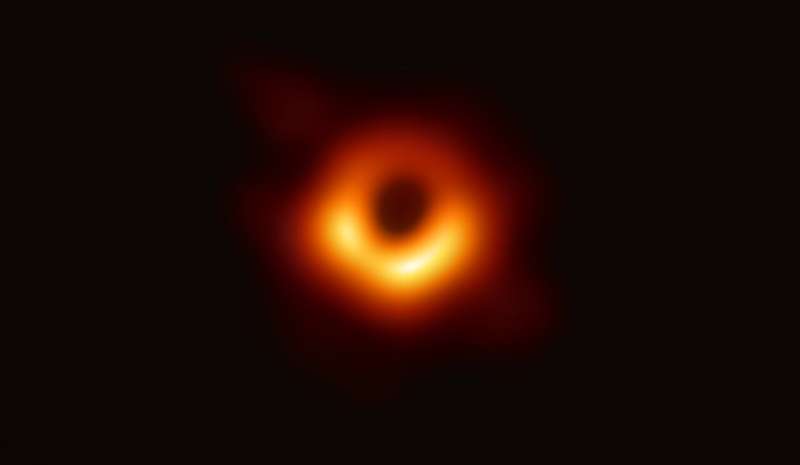Black hole movies coming soon, says leading astronomer

By the time an international group of scientists stunned the world with the first ever image of a black hole, they were already planning a sequel: a movie showing how massive clouds of gas are forever sucked into the void.
The Event Horizon Telescope Collaboration has already recorded the necessary observations and is processing the mountains of data to produce the first video, which will likely be a little jerky, in 2020.
"What I predict is that by the end of the next decade we will be making high quality real-time movies of black holes that reveal not just how they look, but how they act on the cosmic stage," Shep Doeleman, the project's director, told AFP in an interview.
The entire team, comprising 347 scientists from around the world, were honored Thursday with the Breakthrough Prize in Fundamental Physics, winning $3 million for the so-called "Oscar of science" for the image they released on April 10.
"I've been working on this for 20 years. So my wife was finally convinced that what I was doing was worth it a little bit," joked the 52-year-old father of two, who is an astronomer at the Harvard-Smithsonian Center for Astrophysics.
Astronomers could previously detect the light that is being swallowed by black holes, but "we just didn't have the sharpness in our images to see what shape the light had."
That obstacle was ultimately overcome when the team linked multiple radio telescopes together, thus simulating an Earth-sized giant telescope capable of observing at an unprecedented resolution objects that appear microscopic in the night sky.
Galactic explorers
Toward the end of the 2000s, the hard work began to pay off. The team obtained approval to use three telescopes to establish a proof of concept, and in 2008 published the first measurements of a black hole.
By April 2017, they had assembled eight radio telescopes in Chile, Spain, Mexico, the US, and the South Pole.
The giant instruments observe high frequency radio waves, allowing astronomers to see through the gas and dust of the galaxy, all the way through to the boundaries of black holes.
In addition to its observations of the black hole in the Messier 87 (M87) galaxy, the team also looked at the one at the center of our own Milky Way: Sagittarius-A*.
They took readings in 2018, and plan to repeat them next year.
Our own black hole is far more turbulent and therefore difficult to observe.
"Orbits of matter around M87 take about a month to circulate. Whereas orbits around Sagittarius-A* can take only half an hour, during one night of observing Sagittarius-A* can change before your eyes," explained Doeleman.
"It could be that maybe we will make the first crude movie" by 2020, he added. Ideally, scientists would need more telescopes, both on Earth and in orbit, to improve the resolution yet further.
But the manner in which the first image of M87 has captured people's imagination has left Doeleman optimistic about the prospect of future funding, both from governments and possibly private donors.
"The EHT has delivered more value than any other scientific project that I can think of in history," he said.
"We do see ourselves as explorers, we've taken a journey in our minds. And we are instruments at the edge of a black hole. And now we're coming back to report what we found."
© 2019 AFP





















